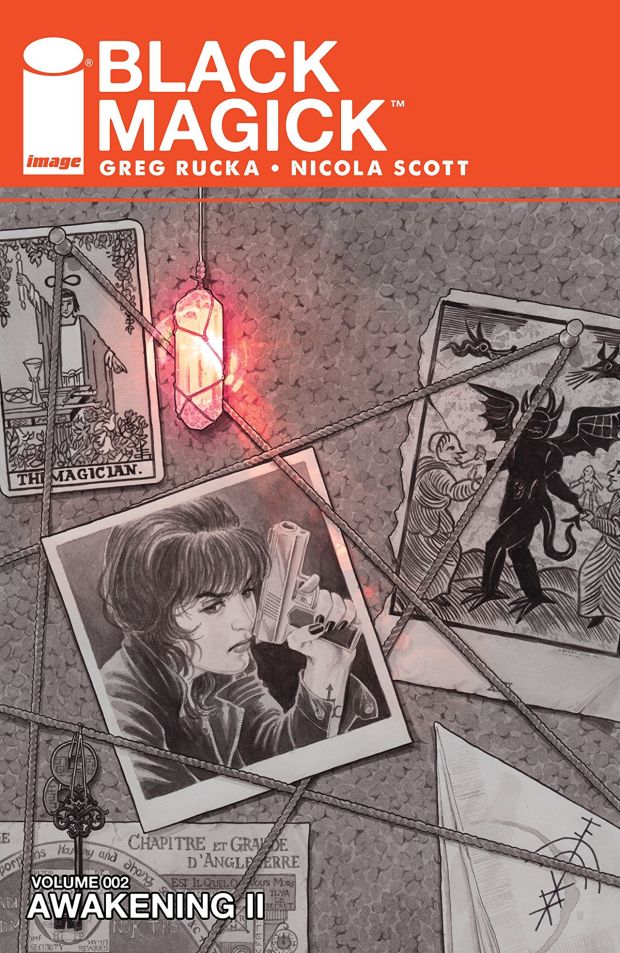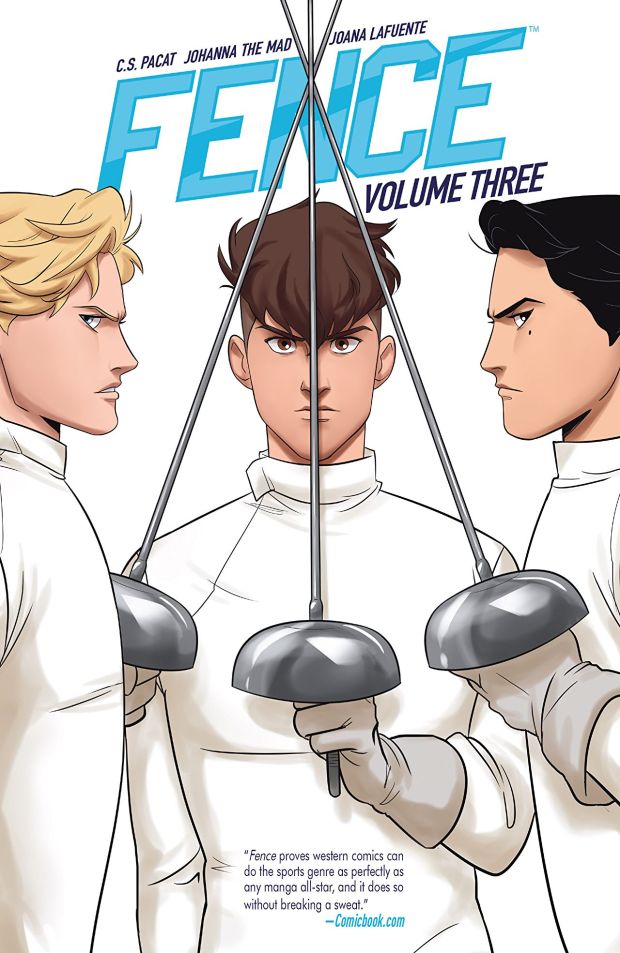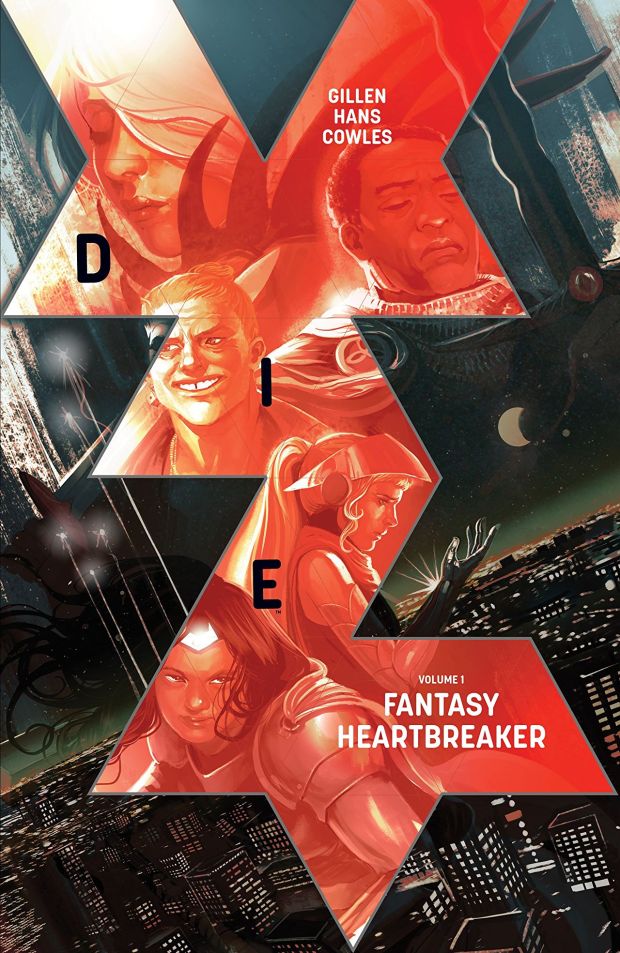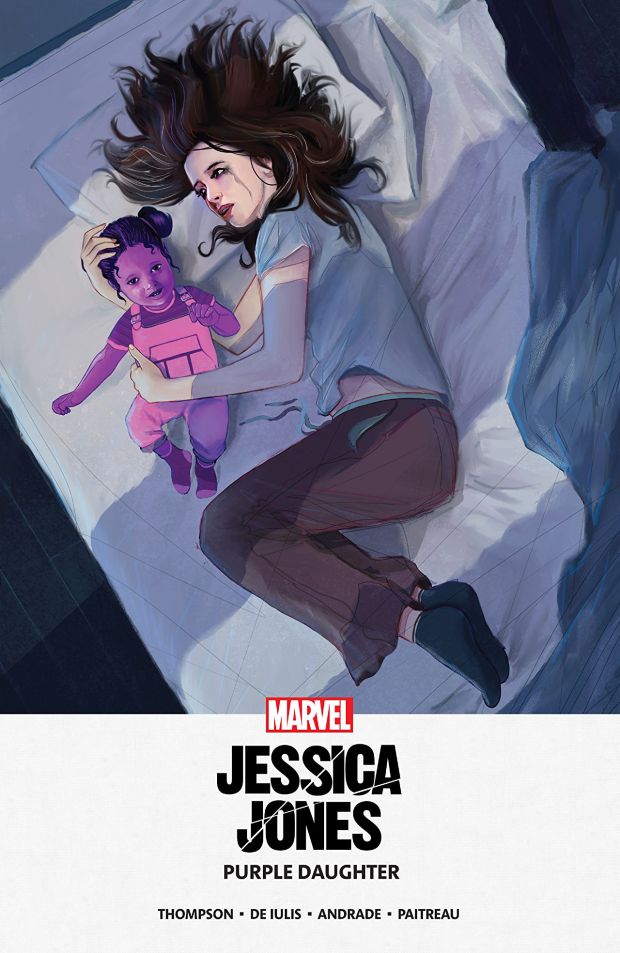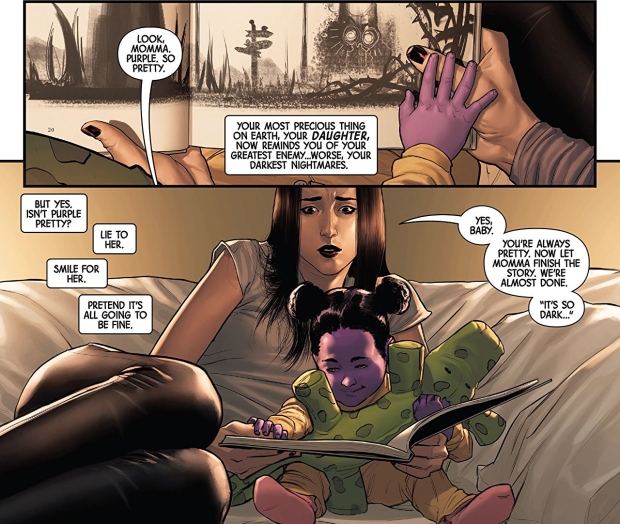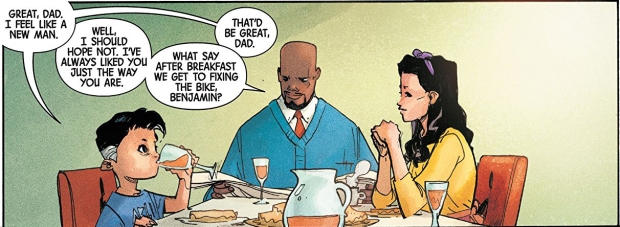by Greg Rucka and Nicola Scott
collects Black Magick #6-11
volume one | two
Rucka and Scott follow up a phenomenal first volume with this equally fantastic second installment, perfect for heading into fall and the Halloween season. In the opening chapters we spend less time with the police investigation, and more of Rowan’s childhood and the burden of her magical lineage, as well as table setting for our other magical groups, namely witch hunters and demons. The tension slowly builds as Rowan and Alex get closer to unraveling the true villains behind the murders as well as Alex’s attackers, paralleling the impending birth of Rowan’s partner Morgan and his wife’s first child. Things get complicated between Rowan and Morgan with new developments in the investigation, and anyone picking up on other tension will see more of that addressed too. While the pacing was a little more up and down, the story continues to be dark, unique and superbly entertaining. (There were a few more horror elements introduced but nothing this wuss couldn’t handle.) Also, as a new black cat owner, I got a real kick out of finally seeing Rowan’s familiar get his moment, and it didn’t disappoint. (Jodi Wynne does a fantastic job with the cat’s lettering.) I love how Black Magick seems to be aware that sisterhood is at its core – sisterhood that has sustained Rowan and Alex not just for all their lives, but their past lives too.
Scott is at the top of her game with her meticulous black and white realism style. While a lot of art is done digitally the way Scott paints by hand really shows her talent and care. Using color to denote magic is really taken up a notch, and it’s a testament to both Scott and Chiara Arena’s talented partnership that you don’t miss the color when it isn’t there, and the scenes with color are just as special but in a different way. (I didn’t realize until reading an interview with the creators that Scott came up with the idea that witches can see the full color spectrum, and when they use magic, we see what they can see. Very cool.) That being said, there are some full page spreads that are just tremendous to behold. Even though there are also a few nude and sexual scenes, it’s never gratuitous and always for the sake of the story. It’s interesting how Rowan’s sexuality and her magic are intertwined here, not in an exotic/othering kind of way, but more subconsciously, and perhaps also in that her magic (and particular heritage) limits her freedom.
I read this second volume in the hardcover version, which compiles both the first and volume, called The First Book of Shadows, and it was absolutely worth it to better appreciate the artwork. There’s also some great bonus material including pages from Scott’s artwork, an interview with the creators, a guide to Portsmouth, and variant covers. Most especially I liked the “autopsy of a scene,” seeing how all the components of a single page – dialogue, sketching, painting and digital colors – all come together.
I now join the many fans anxiously awaiting the next installment – but whatever the next chapter holds it will certainly be worth the wait.
